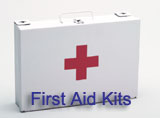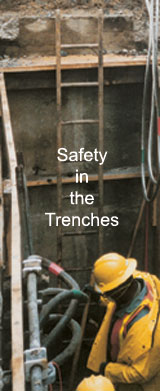
SAFETY in the Trenches
 Excavation
and trenching are among the most hazardous construction operations.
Cave-ins pose the greatest risk and are much more likely than other
excavation-related accidents to result in worker fatalities. Other
potential hazards include falls, falling loads, hazardous atmospheres,
and incidents involving mobile equipment. Excavation
and trenching are among the most hazardous construction operations.
Cave-ins pose the greatest risk and are much more likely than other
excavation-related accidents to result in worker fatalities. Other
potential hazards include falls, falling loads, hazardous atmospheres,
and incidents involving mobile equipment.
No matter how many trenching, shoring, and backfilling jobs you
have done in the past, it is important to approach each new job
with the utmost care and preparation. Many on-the-job accidents
result from inadequate initial planning. Waiting until after the
work has started to correct mistakes in shoring or sloping slows
down the operation, adds to the cost, and increases the possibility
of a cave-in or other excavation failure.
- Observe these guidelines for safe projects:
- Evaluate soil conditions and select appropriate protective systems.
- Construct protective systems in accordance with the standard
requirements.
- Preplan; contact utilities (gas, electric) to locate underground
lines, plan for traffic control if necessary, determine proximity
to structures that could affect choice of protective system.
- Test for low oxygen, hazardous fumes and toxic gases, especially
when gasoline engine-driven equipment is running, or the dirt
has been contaminated by leaking lines or storage tanks. Insure
adequate ventilation or respiratory protection if necessary.
- Provide safe access into and out of the excavation.
- Provide appropriate protections if water accumulation is a problem.
- Inspect the site daily at the start of each shift, following
a rainstorm, or after any other hazard-increasing event.
- Keep excavations open the minimum amount of time needed to complete
operations.

|
 
June 2003 IBEW
Journal |
